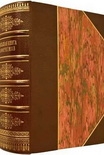Plunder by Menachem Kaiser (english novels for students txt) 📕

Read free book «Plunder by Menachem Kaiser (english novels for students txt) 📕» - read online or download for free at americanlibrarybooks.com
- Author: Menachem Kaiser
Read book online «Plunder by Menachem Kaiser (english novels for students txt) 📕». Author - Menachem Kaiser
The enthusiasm of local gold-seekers has been whetted by the historical reports of extraction of large quantities of gold; the abandonment of unprofitable mines; and notable amateur discoveries. In 2008, gold-seekers were shocked to hear of the discovery of gold fragments weighing 57, 11.5, and 4 grams. Supposedly they were discovered in the gravel pits in the Kaczawa Valley.
According to PGI experts, extending existing veins by several hundred meters and finding five new ones would make accessible 100 tons of gold. Significant treasures can be hiding under rocks—but to reach them, it would require drilling 100–300 meters.
In 1512 a robber knight named Christoph von Zedlitz, known as “Black Christopher,” and his gang were caught and hanged. Their treasure, however, has never been found, despite being sought for more than five centuries. There are those who believe that the treasure was in fact discovered in the 1970s by a group of Germans, known in the region for their off-road vehicles and advanced exploration equipment.
The researcher Włodzimierz Antkowiak recorded the following from a man who worked for AEG during World War II:
There is indisputable evidence that in the Kłodzko Fortress the Germans secured at least two large caches of valuable items, including antiques. One of them was discovered by employees of the AEG armaments factory during an underground expedition—what we saw was breathtaking! Real treasures! Under the walls were old shelves filled with various objects: porcelain tableware next to beautifully engraved silver cups. Old leather books and manuscripts on the floor. Dozens of oil paintings by the old masters. Satin dresses with gold and silver thread. A stack of pistols in the middle of the room. We figured out later that we had discovered the spot where the Nazis had hidden artifacts stolen from the Kłodzko Museum and the Wrocław Museum. Many AEG employees stole items and sent them to their families. Eventually the Germans realized that the hiding place had been discovered, and moved the stash somewhere else. Shortly after the Red Army occupied Kłodzko, they tried to find this new hiding place, but failed.
In the basement of the courthouse in Sosnowiec are rows upon rows of Forever Books, the historical ledgers in which sales of land were recorded.
In the Forever Book of plot number 1304 it is written:
In 1904, Joseph and Judessa Mangel purchased the property for 22,000 rubles. After their death, the property was divided up among their ten children.
In 1936 the Kajzer brothers, Moshe and Shia, bought the property from the Mangel children for 42,734 złoty.
No subsequent sales are recorded.
There is a legend, very popular among treasure hunters in Lower Silesia (particularly those from Jelenia Góra), that somewhere between Pilchowice and the quarry in Radomice there is an entrance to a mine blocked by an enormous iron gate with no visible lock and no hinges.
A local gold-digger reportedly knew the location of the gate, and for many years he struggled to figure out how to open it. He revealed the existence, but not the location, of the gate to four explorers, who spread the word. This gold-digger died under very mysterious circumstances.
In the early 1980s, the newspaper Kurier Polski invited readers to share any information they had concerning valuables hidden by Germans at the end of World War II. The series was titled “Where the Gold of Wrocław Was Hidden.” The following note was published in the paper on July 5, 1983:
Władysław T. worked in Miłków, where, toward the end of April 1945, eleven trucks escorted by a team of SS men arrived at the estate of Count Matuschka. On the trucks were metal crates. The next day, the crates were reloaded onto horse-drawn carts. The horses, SS men, and a group of French prisoners left the village, toward Bierutowice. In the evening SS troops returned to Miłków, but without boxes or prisoners. Supposedly, the French prisoners buried the chests and then were killed.
In August 2015, it was reported in the Polish media that two unnamed explorers had recently notified Wałbrzych city officials that they had discovered a buried World War II–era train; everyone immediately understood this to be the legendary Golden Train.
A few days later, at a press conference at City Hall, officials confirmed the reports, and also formally notified the Ministry of Treasury, Ministry of National Defense, and Ministry of Culture and National Heritage of the discovery. The explorers who had purportedly found the train were not present, but their lawyer, former senator Jarosław Chmielewski, was, and he vouched for their credibility and experience as treasure hunters, citing their thorough knowledge of World War II history and their many years of responsible exploration. Chmielewski said his clients would divulge the precise location of the train only if the government guaranteed them 10 percent of the value of whatever was eventually found.
Major international news outlets, including Reuters, BBC, Fox News, CNN, and Sky News, breathlessly reported the discovery of the Golden Train (or rather the as yet unsubstantiated claim of the discovery of the Golden Train—many publications hardly bothered with the distinction). Speculation ran rampant as to what was on the train. Gold bullion? Long-lost artwork? The tsarist amber chamber?
The media worked themselves into a frenzy; there was an avalanche of sensationalist reporting, particularly from abroad. A headline in Britain’s Daily Mail read, “Poland Confirms Existence of Underground Nazi Gold Train.”
The press’s lack of skepticism was reflected and galvanized by the lack of skepticism among Polish officials.





Comments (0)